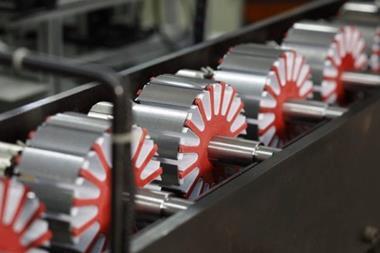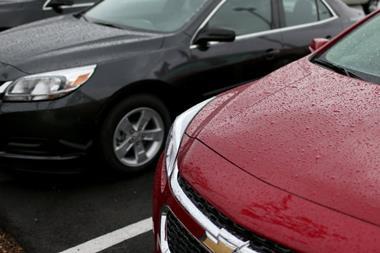Changing regulation, operational challenges and more scrutiny of environmental and sustainability practices are driving recall risk
Sedgwick has published its latest European product recall index report. The report found that recall volume has remained consistently high in response to new and changing regulation, increased scrutiny of environmental and sustainability practices and widespread operational challenges.
“Manufacturers are operating in one of the most turbulent and uncertain times in recent history, facing greater supply chain challenges, cybersecurity issues and regulatory changes. Additionally, focused efforts in the EU for more sustainable business practices will influence risk and recall rulings,” said Julie Ross, international business development director at Sedgwick.
“Leaders should plan to take a fresh look at their practices and processes in 2022 to ensure their teams are prepared to comply with new legislation and stay protected in the event of a recall or safety inquiry.”
Highlights include third quarter data and predictions for what to expect in the remainder of 2021 and into 2022:
- Automotive recalls saw a 14% quarter-over-quarter decrease; however quarterly volumes remain higher than pre-pandemic levels despite decreased demand for vehicles and pandemic-related supply chain challenges.
- Food and beverage recalls continued to rise, from 1,120 recalls in Q2 to 1,178 recalls in Q3 2021. For the third consecutive quarter, contamination (other than bacteria) remains the leading cause of food and beverage recalls (37% of all events).
- Pharmaceutical recalls dropped 29% in the third quarter despite the incremental increases seen in previous quarters. Pharmaceuticals produced in France continue to be the most likely to be recalled.
- Medical device recall activity grew 6% in Q3 (to 709 events) and remains 38% above 2020’s quarterly average. There was a broader range of recall causes this quarter, with software events as the leading cause for recall.
- Electronic recalls fell 7% in Q3 (to 71 events) but remained 26% higher than 2020’s quarterly average. This heightened activity reflects a continued focus on electronics safety as businesses continue to navigate in-person and remote work environments.
- Third quarter toy recalls remained consistent with last quarter at 81 events. This remains 23%, down from Q1, which recorded 105. Choking risk was the leading cause of recall with 24 events.
- Clothing recalls dropped to 30 recalls in Q3, after almost doubling last quarter. Children’s products are the focus in clothing recalls, representing two-thirds of all recall events this quarter.
Looking ahead to 2022, Sedgwick notes the introduction of “right to repair” rules for household electronics, which flow from the EU Ecodesign Directive. While the focus of this new approach is primarily the environment and sustainability, there will inevitably be product safety and recall considerations arising from these changes, it warns.
It breaks down other forward-looking trends as follows:
- The automotive industry should expect more regulatory activity in 2022 focused on consumer safety as vehicle technology becomes increasingly complex. Next year, Regulation (EU) 2019/2144 will require manufacturers to implement new safety measures in cars, including features to warn of driver drowsiness and distraction, intelligent speed assistance, and use of cameras or sensors to assist reversing safely. The increased interest in electric vehicles and autonomous driving will add to the scrutiny of manufacturing processes for automakers.
- Supply chain disruptions may lead to food and beverage substitutions and could impact the accuracy of ingredient and allergen labelling. Additionally, commissions in both the UK and EU are cracking down on companies’ misleading claims on environmental sustainability in food production. As these initiatives get underway, food and drink companies should make a concerted effort to review product labelling and marketing claims, and to ensure environmental and sustainability claims are accurate and compliant with current, and expected, regulatory guidance.
- With legislative overhaul for the pharmaceutical industry anticipated in 2022, we expect this industry will enjoy continued growth despite the risks and challenges that can be expected in an increasingly digital world where the line between pharmaceuticals and technology continues to cross.
- For medical devices, manufacturers have been busy preparing for, and now implementing, the changes introduced by the new Medical Device Regulation (MDR) introduced in May 2021. While there has been significant focus on ensuring compliance with these new requirements, we expect heightened recall activity in 2022 as regulators start working with the new regime.
- The apparel industry faces the highest level of risk at the intersection of innovation and sustainability. The biggest safety challenges for smart clothing relate to cybersecurity and data protection, where the EU’s GDPR legislation regards data collected and processed as sensitive. As with food and beverage, the EU is expected to establish rules that encourage sustainable manufacturing of textiles and recycling of used garments. It would be wise to consider how these developments will impact recall rulings.
- Toys are one of the most in-demand categories for consumer products, especially during the holiday season that is already underway. Given strained supply chains, demand for toys is at its highest and some consumers will turn to third-party sellers online for gifts. This comes with risks, as there is no guarantee online sellers comply with product safety laws. This is a continued area of focus for legislation in the EU and UK.




















No comments yet